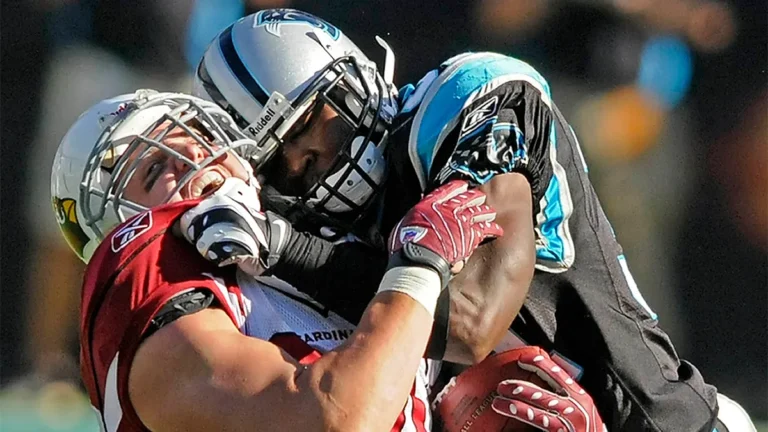Concussions are mild traumatic brain injuries, and sports concussion has become a significant problem. It has recently made headlines with reports about the consequences of returning to play too soon, as well as research findings into the long-term effects of the injury.
Recognising concussion and providing proper treatment is especially important for younger athletes because it typically takes them longer than adults to fully recover.
Despite many attempts by experts, there is no clear definition of concussion. It is uncertain whether any damage to the brain occurs from a concussion. Imaging tests, such as computed tomography (CT) scans and magnetic resonance imaging (MRI) scans, typically do not detect any brain damage — such as bruising or bleeding — in concussion patients.
A concussion does, however, temporarily impair how the brain functions and processes information. For example, after a concussion, a patient may have difficulty with balance and coordination, memory, and speech.
A concussion is typically short-lived. Most people recover within 7 to 10 days. Unfortunately, once an athlete has sustained a concussion, he or she is at greater risk for additional concussions. Repeat concussions can have long-term consequences, so prevention is essential.
Symptoms
The most common symptoms of concussion include:
Drowsiness
Headache
Loss of consciousness
Memory loss
Irritability
Confusion
Balance problems, dizziness
Difficulty speaking and communicating
Depression
Nausea and vomiting
Changes in sleep patterns
According to the U.S. Centers for Disease Control and Prevention, about 200,000 people in the United States suffer concussions while playing sports every year. Concussions occur in a wide range of sports and affect all athletes, from professional players to little leagues.
Concussions are mild traumatic brain injuries, and sports concussion has become a significant problem. It has recently made headlines with reports about the consequences of returning to play too soon, as well as research findings into the long-term effects of the injury.
Recognising concussion and providing proper treatment is especially important for younger athletes because it typically takes them longer than adults to fully recover.
Despite many attempts by experts, there is no clear definition of concussion. It is uncertain whether any damage to the brain occurs from a concussion. Imaging tests, such as computed tomography (CT) scans and magnetic resonance imaging (MRI) scans, typically do not detect any brain damage — such as bruising or bleeding — in concussion patients.
A concussion does, however, temporarily impair how the brain functions and processes information. For example, after a concussion, a patient may have difficulty with balance and coordination, memory, and speech.
A concussion is typically short-lived. Most people recover within 7 to 10 days. Unfortunately, once an athlete has sustained a concussion, he or she is at greater risk for additional concussions. Repeat concussions can have long-term consequences, so prevention is essential.
Symptoms
The most common symptoms of concussion include:
Drowsiness
Headache
Loss of consciousness
Memory loss
Irritability
Confusion
Balance problems, dizziness
Difficulty speaking and communicating
Depression
Nausea and vomiting
Changes in sleep patterns
According to the U.S. Centers for Disease Control and Prevention, about 200,000 people in the United States suffer concussions while playing sports every year. Concussions occur in a wide range of sports and affect all athletes, from professional players to little leagues.
Concussions are mild traumatic brain injuries, and sports concussion has become a significant problem. It has recently made headlines with reports about the consequences of returning to play too soon, as well as research findings into the long-term effects of the injury.
Recognising concussion and providing proper treatment is especially important for younger athletes because it typically takes them longer than adults to fully recover.
Despite many attempts by experts, there is no clear definition of concussion. It is uncertain whether any damage to the brain occurs from a concussion. Imaging tests, such as computed tomography (CT) scans and magnetic resonance imaging (MRI) scans, typically do not detect any brain damage — such as bruising or bleeding — in concussion patients.
A concussion does, however, temporarily impair how the brain functions and processes information. For example, after a concussion, a patient may have difficulty with balance and coordination, memory, and speech.
A concussion is typically short-lived. Most people recover within 7 to 10 days. Unfortunately, once an athlete has sustained a concussion, he or she is at greater risk for additional concussions. Repeat concussions can have long-term consequences, so prevention is essential.
Symptoms
The most common symptoms of concussion include:
Drowsiness
Headache
Loss of consciousness
Memory loss
Irritability
Confusion
Balance problems, dizziness
Difficulty speaking and communicating
Depression
Nausea and vomiting
Changes in sleep patterns





